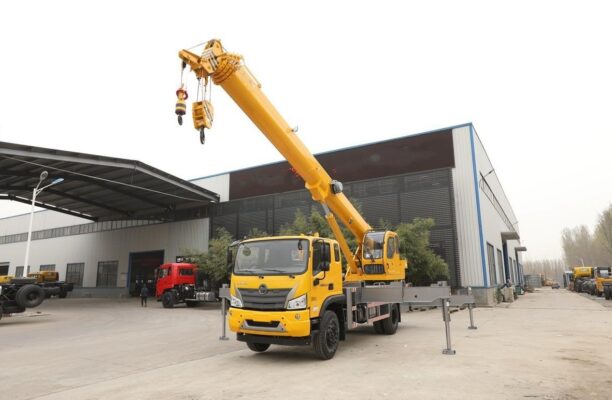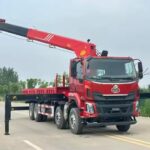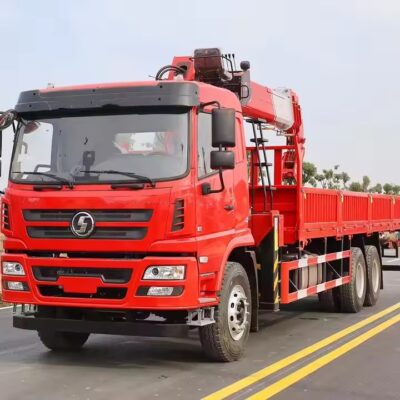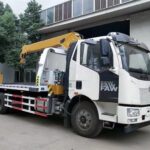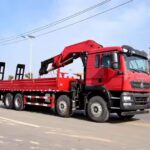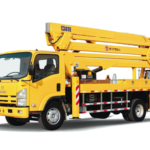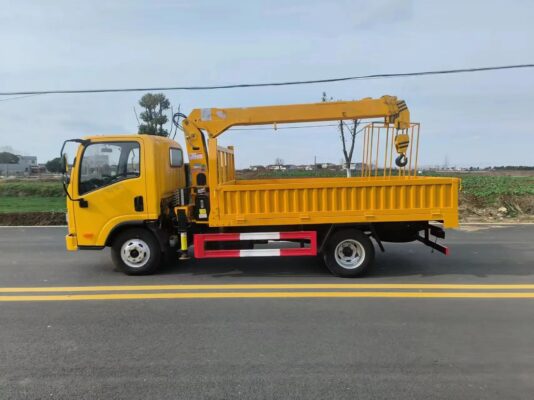
1、Different test cycles:
The National V emission standard utilized the NEDC (New European Driving Cycle) cycle. However, with the advent of the National VI standard, this is changed to the WLTC (Worldwide Harmonized Light Vehicles Test Cycle). The WLTC cycle offers a more comprehensive assessment of a vehicle’s emissions under a variety of conditions. It takes into account cold start scenarios, acceleration and deceleration phases, as well as high-speed and high-load operations. This broader range of conditions ensures that the emissions measured are more representative of real-world driving situations. By covering a larger engine range, the WLTC cycle imposes higher demands on the emission control performance of vehicles. For truck-mounted cranes, this means that their engines need to be more efficient in managing emissions across different operating scenarios. For example, when a truck-mounted crane is starting up in cold weather, the engine must now meet stricter emission standards. During acceleration and deceleration, which are common in construction sites or during loading and unloading operations, the engine’s emission control systems need to be highly effective to prevent excessive emissions. The WLTC cycle also challenges the engine’s performance under high-speed and high-load conditions, such as when the crane is transporting heavy loads on highways. This change in test cycle forces manufacturers to develop more advanced engine technologies and emission control systems to ensure compliance with the stricter standards.
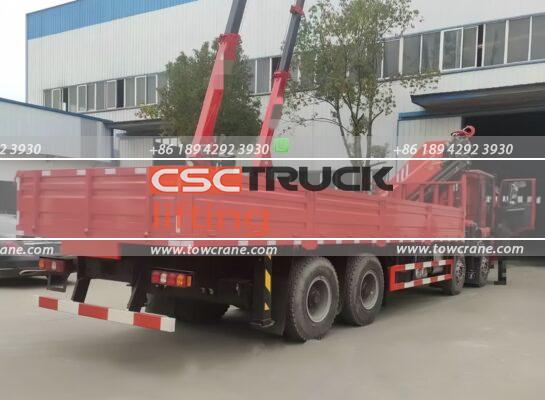
2、Different test procedures:
The test procedures for the National VI standard are significantly more stringent than those of the National V standard. These procedures have a direct impact on the fuel consumption and emission performance of vehicles. For instance, the requirements for test vehicles are enhanced. The weight of test vehicles under the National VI standard needs to be increased, which more closely simulates the actual weight of vehicles in real-world usage. Additionally, the tire specifications must be the same as those of mass-produced vehicles. This measure is designed to prevent automobile enterprises from exploiting standard loopholes. In the past, some manufacturers might have been able to obtain seemingly good emission data in laboratory tests by using lighter test vehicles or different tire specifications. However, these vehicles might not perform as well in actual use. By tightening these requirements, the National VI standard ensures that the vehicles tested truly represent what consumers will be driving on the road. This not only promotes fairness in the testing process but also guarantees that the emission control measures implemented by manufacturers are effective in real-life situations. For truck-mounted cranes, this means that the testing procedures are more demanding, and manufacturers need to ensure that their cranes can meet the stricter standards under realistic test conditions.
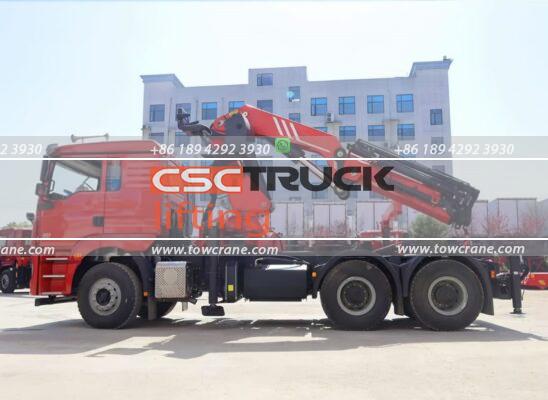
3、Stricter limit requirements:
The National VI standard is approximately 40%-50% stricter than the National V standard. This significant increase in stringency reflects the growing commitment to reducing vehicle emissions and improving air quality. Moreover, in line with the fuel neutrality principle, the National VI standard adopts the same limit requirements for both gasoline and diesel. This approach ensures that all types of fuels are held to the same high standards of emission control. For truck-mounted cranes using diesel fuel, this means a substantial reduction in the allowable emissions of pollutants such as nitrogen oxides (NOx), particulate matter (PM), and hydrocarbons (HC). Manufacturers need to invest in advanced emission reduction technologies to meet these stricter limits. For example, they may need to develop more efficient catalytic converters, particulate filters, and exhaust gas recirculation systems. These technologies work together to reduce the emissions of harmful pollutants and ensure that the truck-mounted cranes comply with the National VI standards.
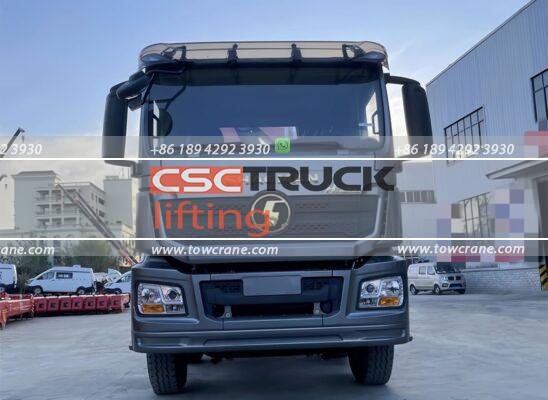
4、Emission test experiment transfer:
Under the National V standard, the emission test was primarily conducted in a laboratory setting. However, the National VI standard takes a significant step forward by transferring the emission test experiment from the laboratory to actual roads. This approach aims to ensure that vehicles not only meet the standards in controlled laboratory environments but also perform well in real-world driving conditions. When vehicles are running normally on urban roads, suburban roads, and expressways, portable emission testing equipment is used to test the vehicle’s exhaust gas. The results of these on-road tests must also meet the strict emission standards. This measure effectively prevents cheating by manufacturers who might optimize their vehicles for laboratory tests but fail to maintain the same performance on the road. For truck-mounted cranes, this means that they need to be able to maintain low emissions throughout their various operating environments. Whether they are working in congested urban areas, on less populated suburban roads, or traveling at high speeds on expressways, the cranes must meet the emission standards. This requires not only advanced engine and emission control technologies but also proper maintenance and operation by users to ensure consistent emission performance.
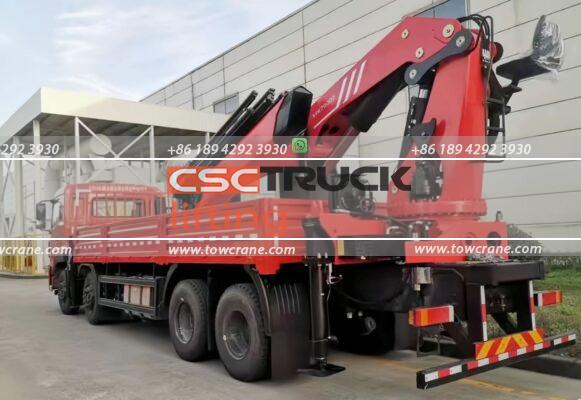
5、Stricter evaporation emission control:
The National V standard adopted the European standard for evaporation emissions control. However, due to differences in climatic conditions and vehicle usage patterns between Europe and China, this approach had some limitations. In Europe, the average temperature is relatively low, and diesel vehicles account for more than 50% of all vehicles. As a result, the evaporation problem is not as prominent, and the standard requirements are relatively low. In contrast, in China, there are large temperature differences throughout the year, and gasoline vehicles make up the majority. This leads to a relatively more obvious evaporation problem. To address this issue, the National VI standard puts forward more stringent requirements for gasoline evaporation emissions control of vehicles when parked, driving, and in high-temperature weather. At the same time, it also requires vehicles to be equipped with an ORVR (Onboard Refueling Vapor Recovery) on-board vapor recovery device. This device increases the control of oil and gas during refueling, reducing the release of volatile organic compounds into the atmosphere. For truck-mounted cranes, which may be parked outdoors for extended periods and exposed to various weather conditions, stricter evaporation emission control is essential. The ORVR device helps to capture and recycle fuel vapors, reducing emissions and minimizing the environmental impact. Manufacturers need to ensure that their cranes are equipped with these advanced vapor recovery systems and that they function properly to meet the stricter emission standards.
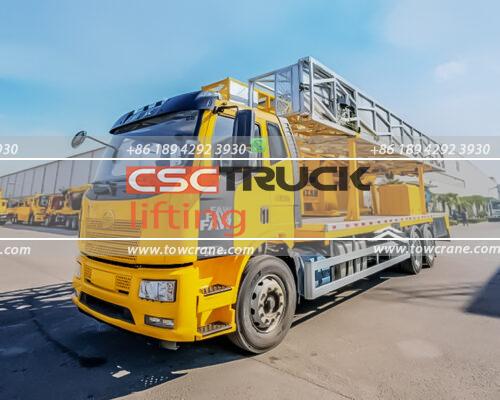
6、Adding requirements for emission warranty periods:
The National VI standard introduces a significant change by adding requirements for emission warranty periods. Specifically, within three years or 60,000 kilometers, if emissions-related failures and damages occur on the vehicle, resulting in excessive emissions, the vehicle manufacturer shall bear all costs for related repairs and replacement of parts. This provision is designed to protect the rights and interests of vehicle owners. In the case of truck-mounted cranes, which are often expensive investments and play a crucial role in various industries, this warranty period provides added assurance to owners. If a crane experiences an emissions-related problem within the warranty period, the manufacturer is responsible for fixing the issue at no cost to the owner. This not only reduces the financial burden on owners but also encourages manufacturers to produce high-quality vehicles with reliable emission control systems. It also promotes a culture of accountability among manufacturers, ensuring that they take emission control seriously and provide durable and efficient products.
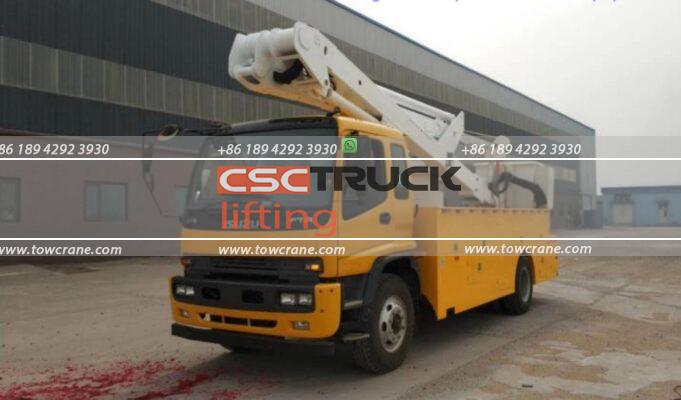
7、Improving low-temperature test requirements:
The National VI standard tightens the limits for carbon monoxide (CO) and hydrocarbons (HC) by one-third compared to the National V standard. At the same time, the control requirements for carbon monoxide are increased. This is particularly important for vehicles operating in cold climates or during winter months. For truck-mounted cranes, which may be used in various regions with different temperature ranges, improved low-temperature test requirements ensure that the engines can start and operate efficiently without excessive emissions. When vehicles are cold-started in winter, the engine’s emission control systems need to be able to quickly reach optimal performance. By tightening the limits for CO and HC and increasing the control requirements for carbon monoxide, the National VI standard helps to reduce emissions during cold starts and improve air quality. This also requires manufacturers to develop engines and emission control systems that are more resilient and effective in cold temperatures.
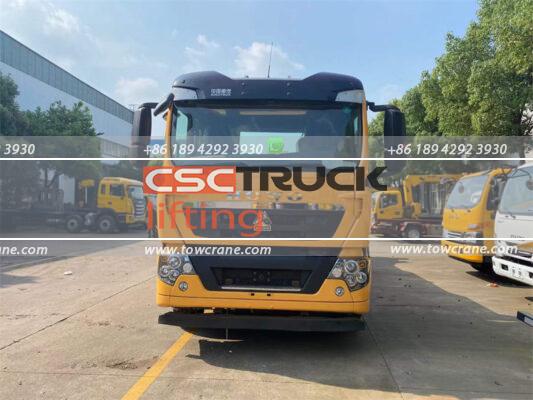
8、Introducing strict American on-board diagnostic system control requirements:
The National VI standard introduces strict American on-board diagnostic system control requirements, comprehensively enhancing the real-time monitoring ability of vehicle emission status. This on-board diagnostic system is designed to detect vehicle emission failures in a timely manner and ensure that vehicles are repaired in a timely and effective manner. For truck-mounted cranes, this means that there is a continuous monitoring system in place to detect any issues with the emission control systems. If a problem is detected, the system can alert the driver or owner, allowing for prompt action to be taken. This not only helps to maintain low emissions but also prevents potential damage to the engine and other components. The on-board diagnostic system also provides valuable data for maintenance and troubleshooting, enabling technicians to quickly identify and fix emission-related problems. By adopting these strict control requirements, the National VI standard ensures that truck-mounted cranes are equipped with advanced monitoring and diagnostic systems to maintain optimal emission performance throughout their lifespan.
